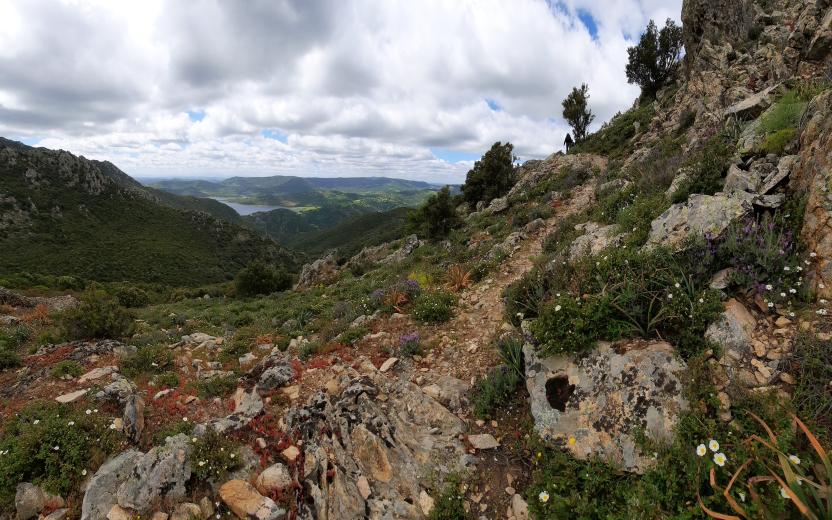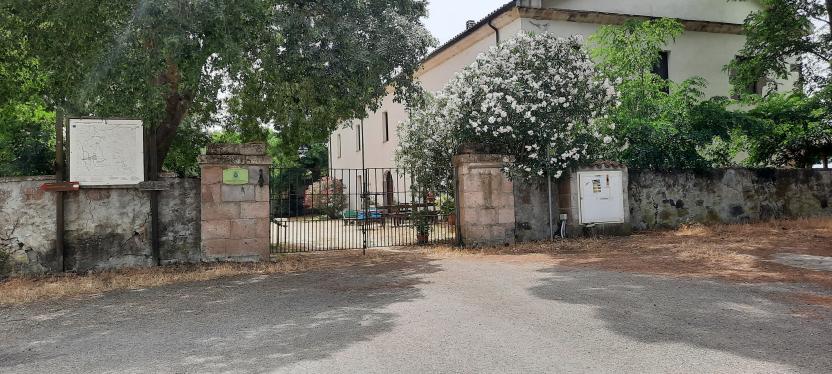Sentiero Italia (Stage Z02) Saltàra - Luogosanto
Overview of the itinerary
Sentiero Italia runs the length of the island’s eastern side, covering its most important mountains, in 28 stages. Starting from the north: it flanks the Monte Limbara massif, crosses the limestones of Mont’Albo and Tuttavista, skirting the Gulf of Orosei, it crosses the Supramonte, Gennargentu and the Tacchi of Ogliastra and reaches Perdasdefogu. Further south, it passes through Armungia and the Gerrei sub-region. Lastly, it touches on the villages of Burcei and San Gregorio, continuing on the Sette Fratelli massif to the old prisons of Castiadas.
General information on Sentiero Italia (Grand Italian Trail)
Sentiero Italia, or Grand Italian Trail, as also explained on the official website, is a walking route that crosses the whole of Italy, using mainly but not exclusively “registered trails”.
In particular, in Sardinia, not all the stages of the Sentiero Italia of CAI (Italian Alpine Club) are made of trails already included in the registry of the Sardinia Trail Network (RES), either because they have not yet been tested and approved or simply because they cannot be registered as they do not meet the requirements. However, as a whole, the Sentiero Italia is the single longest walking route currently crossing Sardinia from the north (S. Teresa Gallura, stage Z 1) to the south (Castiadas, end of stage Z 28), touching on the most fascinating mountain areas in central-eastern Sardinia: the plateau of Buddusò, Tepilora, the Cedrino river valley, the ancient forests of Montes, Perda Liana and the regional forest of Montarbu, Monte Genis, and lastly the regional forest of Settefratelli (among the many crossed by the various stages of this long hiking itinerary).
Information on this stage of the trail
Leaving the small town of Luogosanto, the route follows a local blacktop road in the direction of the Fonte La Filetta Park. At a fork in the road, it leaves the road leading to La Filetta Park and follows the road to the right in a south-westerly direction until it reaches the stile at the entrance to the stazzo (farmhouse) of Sesara. The route continues on a dirt track through private land, crossing gates that can be opened and then must be closed again. The route continues through the beautiful landscapes characteristic of Gallura, with granite rock outcrops, holm oaks and wild olive trees, until it reaches the small country church of San Biagio.
In Gallura there are many country churches around which, on feast days, lunches are organised for hundreds or even thousands of people.
Leaving the church of San Biagio, the route heads in the direction of the ford across the Liscia river.
PLEASE NOTE: this section of the trail is not marked as the landowner has not authorised the installation of signs. Once past the river, the route climbs up a path flanking a cliff and through a young forest of predominantly holm oaks and strawberry trees. At one time, this forest consisted of primary trees that were cut down for charcoal in the 19th century. Short sections of the path built at that time have been restored.
After leaving the trail, the route continues along a local road that runs alongside the Liscia lake. It continues on a livestock trail, on private property. On this stretch, you can admire an over 2000-year-old wild olive tree and the viaduct of a railway line now only used in the summer months as a tourist line. The trail arrives in Sant'Antonio di Gallura after following a stretch of blacktop road and, if you wish, after a detour to the railway station near Lake Liscia. Sant’Antonio is ‘heir’ to an ancient medieval village, Villa de Castro, built at the foot of the Lu Naracu nuraghe (prehistoric stone fortress) a few hundred metres from the ancient church of S. Andrea and from the current square in the centre of the village. The church of Sant’Andrea, which was built no later than the 1700s, belonged to the noble Pes family of Tempio Pausania.
Approximately 5 km from Sant’Antonio di Gallura, deviating on a farm road, is the farmhouse of Ms Santoli, who has preserved the original furnishings and collected photographs and interesting pieces of rural art over the years. In the immediate vicinity of the village are thousand-year-old wild olive trees. The area is also rich in archaeological heritage, including the Sarra di l'Aglientu megalithic wall near the Liscia lake. The countryside of Gallura is dotted with small country churches that, on feast days, celebrate their saints (each being named after its own saint) with festivals and feasts that have a strong social value. Lunch or dinner is always offered at these festivals. Some notable celebrations are the feast of S. Santino on 1 May; S. Giacomo on the first Sunday in May, on 25 July and the second Sunday in September; S. Giuseppe on the second Sunday in June; Nostra Signora della Crucitta on the second Sunday in May; S. Francesco on 4 October; S. Leonardo on the first Sunday in June.
Notes
The ford across the Liscia river can be challenging (it may be impassable in the winter months).
Trail signage to be completed for a short section.
Cell service will not always be available along the route.
In the rainy season, crossing the river can be difficult, although the water flow is controlled by the weir upstream of the ford.
Some stretches of this leg of the trail are on private land, in some cases without signposts, where landowners have not authorised the Italian Alpine Club (CAI) to install them.
FOR UP-TO-DATE INFORMATION, PLEASE READ THE FACT SHEET ON THE SENTIERO ITALIA WEBSITE
- Log in to post comments



